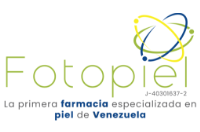TINEA CAPITIS: CAMBIO EN LA PREVALENCIA DE SUS AGENTES EN CARACAS
Palabras clave:
TINEA CAPITIS, TINEA, Tricophyton tonsurans, Tricophyton mentagrophytes, Microsporum gypseum,Resumen
Durante la década 1958-1968 se estudiaron 267 casos de tinea capitis en el
Laboratorio de Micología del Servicio de Dermatología del Hospital
Universitario de Caracas.
En esta serie prevalece por su frecuencia Microsporum canis, seguido a
gran distancia por Tricophyton tonsurans, Tricophyton mentagrophytes
variedad granulosa y Microsporum gypseum; sin embargo, durante los últimos
tres años ha variado el orden de importancia de las diferentes especies
productoras de tinea capitis, observándose aumento en la prevalencia de tinea
capitis de tipo endoectothrix producida por Tricophyton mentagrophytes var.
granulosa, con disminución simultánea de tinea endothrix producida por
Tricophyton tonsurans.
SUMMARY
All cases of tinca capitis diagnosed at the laboratory of Mycology of the
Department of Dermatology of the University Hospital of Caracas were recorded
from December 12, 1958 to May 17, 1968 in order to verify the apparent
increase in the incidence of tinea capitis of the endo-ectothrix type due to
Tricophyton mentagrophytes var. granulosa during the last three years with
simultaneous decrease in the incidence of tinea endothrix caused by Tricophyton
tonsurans. During this period, 4,525 mycologic studies were performed, out of
which only 267 vere cases of tinea capitis.
According to the aetiologic agent, the 267 cases were classified as follow:
M. canis: 187 (70,0%); Tr. tonsurans: 44 (16,5%); Tr. mentagrophytes:
24 (9.0%) ; M. gypseum: 8 (3.0%) ; Tr. violaceum: 3 (1, 2%); M.
audouinii: 1 ( 0 , 3 % ).
The list of agents of tinea capitis in Venezuela has not changed; we have
seen a change, nevertheless, in their order of importance. So that, comparing the
five-year periods of 1958-1963 and 1964-1968, we see that the number of cases
produced by M. canis has not suffered any appreciable change, whereas those
caused by Tr. tonsurans have diminished from 33 to 11, representing a
decrease of two thirds. With reference to Tr. mentagrophytes quite the opposite
has been observed; from 7 cases in the first 5-year period the number has
increased to 17 in the 1964-1968, representing an increment of more than
twice.
It was already Dr. Borelli's opinion in 1964 that the endemy of tinca
caused by endothrix species (Tr. tonsurans and Tr. violaceum) was suffering
a steady decrease after the discovery and systematic use of griseofulvin which
suppresses the transmission through infection within the family.
With the progressive disappearance of endothrix tinca during recent years
we may expect an increase in the incidence of infections o animal origin (M. canis
and Tr. mentagrophytes) the main source of which are cats and dogs, either
diseased or carriers, very difficult to eliminate, and domestic rodents (rats
and mice) whose elimination is practically impossible.
* Trabajo de la Cátedra de Dermatología del Hospital Universitario de Caracas, Universidad
Central de Venezuela (Jefe, Dr. Carlos J. Alarcón). Presentado en la IV Reunión Anual
de la Sociedad Venezolana de Dermatología en Barquisimeto, julio
Descargas
Número
Sección
Licencia
Publicado por la Sociedad Venezolana de Dermatología Médica, Quirúrgica y Estética







